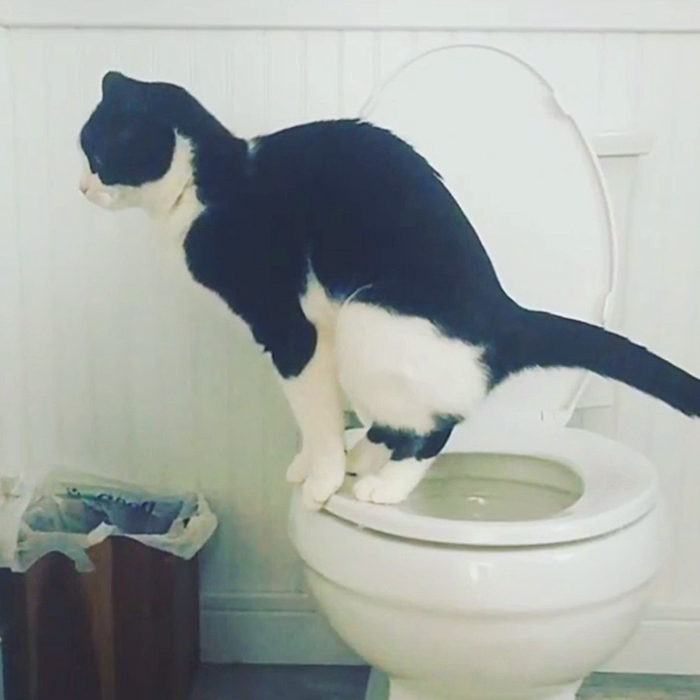On this page in the next paragraph yow will discover a good deal of dependable insight in regards to Can You Flush Cat Poo or Litter Down the Toilet?.
Introduction
As pet cat owners, it's important to be mindful of how we dispose of our feline close friends' waste. While it may appear practical to purge feline poop down the commode, this technique can have harmful repercussions for both the setting and human health.
Ecological Impact
Flushing cat poop presents hazardous virus and parasites into the supply of water, posing a significant threat to water ecological communities. These impurities can adversely impact marine life and compromise water high quality.
Wellness Risks
In addition to environmental concerns, flushing feline waste can additionally pose health and wellness risks to people. Feline feces may consist of Toxoplasma gondii, a bloodsucker that can trigger toxoplasmosis-- a potentially severe ailment, specifically for expectant women and individuals with damaged immune systems.
Alternatives to Flushing
Fortunately, there are safer and more accountable ways to deal with cat poop. Consider the complying with alternatives:
1. Scoop and Dispose in Trash
One of the most usual technique of getting rid of cat poop is to scoop it into a naturally degradable bag and throw it in the trash. Make sure to make use of a specialized trash inside story and take care of the waste quickly.
2. Usage Biodegradable Litter
Select eco-friendly cat clutter made from materials such as corn or wheat. These trashes are environmentally friendly and can be safely taken care of in the trash.
3. Bury in the Yard
If you have a backyard, consider hiding pet cat waste in a designated location away from vegetable gardens and water sources. Make sure to dig deep sufficient to prevent contamination of groundwater.
4. Set Up a Pet Waste Disposal System
Buy a family pet garbage disposal system particularly made for cat waste. These systems use enzymes to break down the waste, reducing odor and ecological effect.
Conclusion
Liable pet dog possession expands past providing food and shelter-- it likewise entails correct waste monitoring. By refraining from purging cat poop down the toilet and opting for alternate disposal techniques, we can decrease our environmental footprint and shield human health.
Why Can’t I Flush Cat Poop?
It Spreads a Parasite
Cats are frequently infected with a parasite called toxoplasma gondii. The parasite causes an infection called toxoplasmosis. It is usually harmless to cats. The parasite only uses cat poop as a host for its eggs. Otherwise, the cat’s immune system usually keeps the infection at low enough levels to maintain its own health. But it does not stop the develop of eggs. These eggs are tiny and surprisingly tough. They may survive for a year before they begin to grow. But that’s the problem.
Our wastewater system is not designed to deal with toxoplasmosis eggs. Instead, most eggs will flush from your toilet into sewers and wastewater management plants. After the sewage is treated for many other harmful things in it, it is typically released into local rivers, lakes, or oceans. Here, the toxoplasmosis eggs can find new hosts, including starfish, crabs, otters, and many other wildlife. For many, this is a significant risk to their health. Toxoplasmosis can also end up infecting water sources that are important for agriculture, which means our deer, pigs, and sheep can get infected too.
Is There Risk to Humans?
There can be a risk to human life from flushing cat poop down the toilet. If you do so, the parasites from your cat’s poop can end up in shellfish, game animals, or livestock. If this meat is then served raw or undercooked, the people who eat it can get sick.
In fact, according to the CDC, 40 million people in the United States are infected with toxoplasma gondii. They get it from exposure to infected seafood, or from some kind of cat poop contamination, like drinking from a stream that is contaminated or touching anything that has come into contact with cat poop. That includes just cleaning a cat litter box.
Most people who get infected with these parasites will not develop any symptoms. However, for pregnant women or for those with compromised immune systems, the parasite can cause severe health problems.
How to Handle Cat Poop
The best way to handle cat poop is actually to clean the box more often. The eggs that the parasite sheds will not become active until one to five days after the cat poops. That means that if you clean daily, you’re much less likely to come into direct contact with infectious eggs.
That said, always dispose of cat poop in the garbage and not down the toilet. Wash your hands before and after you clean the litter box, and bring the bag of poop right outside to your garbage bins.
https://trenchlesssolutionsusa.com/why-cant-i-flush-cat-poop/

I am just very focused on Don’t flush cat feces down the toilet and I hope you liked the entry. Appreciated our posting? Please share it. Let somebody else find it. I recognize the value of reading our article about Don’t flush cat feces down the toilet.
Click Here